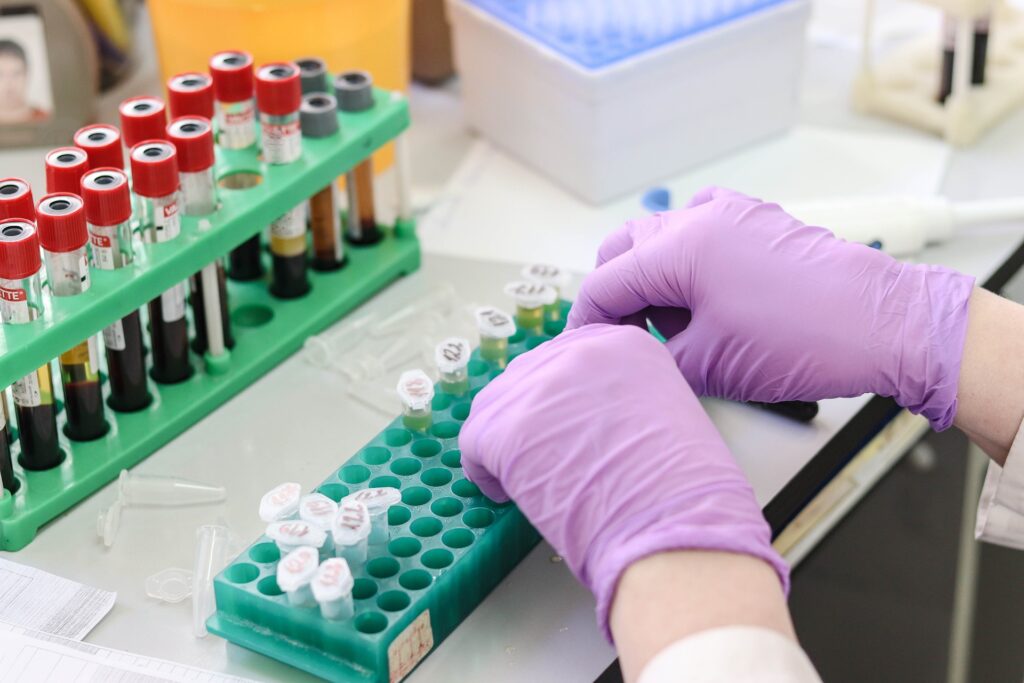Gestational diabetes mellitus (GDM) is a form of diabetes that develops during pregnancy. It poses risks to both the mother and the baby if left untreated.

Overview
Gestational diabetes mellitus (GDM) is characterized by high blood sugar levels that develop during pregnancy in women who have not previously been diagnosed with diabetes. It typically occurs in the second or third trimester and resolves after childbirth. However, it requires careful management to prevent complications for both the mother and the baby.
What is Gestational Diabetes?
Gestational Diabetes (GDM) is a condition in which our body cannot control blood sugar levels due to both insufficient insulin production by beta cells in pancrease and alterations in insulin receptors caused by pregnancy hormones. These receptor alterations lead to insulin resistance like condition and results in ineffectiveness of insulin and thus gestational diabetes.
This leads to high blood sugar levels, which can affect the health of both the mother and the baby. Insulin resistance, a common feature of pregnancy, contributes to the development of GDM.
Causes Of Gestational Diabetes:
Although, the exact cause remain unclear, there are lot of things that together lead to gestational diabetes mellitus. From insufficient insulin production to insulin resistance caused by pregnancy hormones like Human placental lactogen, all can lead to GDM. Let’s see them:
Etiology of GDM:
- Pancreatic Beta-Cell Dysfunction:
- Pancreatic beta cells exhibit impaired function, leading to inadequate insulin production.
- Delayed response of beta cells to glycemic levels further exacerbates the insulin deficiency.
- Insulin Resistance Due to Placental Hormonal Release:
- Human placental lactogen (HPL), along with other hormones such as growth hormone, prolactin, corticotropin-releasing hormone, and progesterone, contributes to insulin resistance.
- Placental hormones induce alterations in insulin receptors, diminishing glucose uptake in peripheral tissues.
How Pregnancy Hormones cause GdM:
- Human Placental Lactogen (HPL):
- Hormone released by the placenta, inducing insulin resistance.
- Promotes alterations in insulin receptors, hindering glucose uptake in peripheral tissues and caused raised blood sugar levels.
- Fetal Response to Maternal Hyperglycemia:
- Maternal hyperglycemia crosses the placenta, leading to fetal hyperglycemia.
- Fetal pancreas responds by producing insulin, promoting accelerated fetal tissue growth.
Risk Factors for Developing GDM:
- Increased Body Weight: Body mass index (BMI) greater than 25.
- Decreased Physical Activity: Sedentary lifestyle contributes to the risk of GDM.
- Family History of Diabetes Mellitus: Genetic predisposition increases susceptibility.
- Prior History of GDM or Newborn with Macrosomia: Previous gestational diabetes or a large baby increases the likelihood of GDM.
- Metabolic Comorbidities: Conditions such as hypertension, low HDL, and triglycerides greater than 250 elevate risk.
- Polycystic Ovarian Syndrome (PCOS): Hormonal imbalances associated with PCOS contribute to insulin resistance.
- Abnormal Glucose Metabolism Markers: Including hemoglobin A1C greater than 5.7 and abnormal oral glucose tolerance test results.
- Insulin Resistance Markers: Such as acanthosis nigricans, indicative of insulin resistance.
- Past Cardiovascular Diseases: Previous cardiovascular issues increase susceptibility to GDM.
Impact of Obesity and Inflammation:
- Body Mass Index and Obesity:
- Higher BMI and obesity contribute to low-grade inflammation.
- Chronic inflammation triggers the synthesis of xanthurenic acid, associated with pre-diabetes and GDM development.
Signs and Symptoms:
Gestational diabetes often does not cause noticeable symptoms, which is why screening during pregnancy is essential. However, some women may experience symptoms such as increased thirst, frequent urination, fatigue, and blurred vision.
Diagnosis of Gestational Diabetes Mellitus (GDM):
Diagnosing gestational diabetes mellitus (GDM) involves screening pregnant women for elevated blood sugar levels to ensure timely intervention and management. The following methods are commonly used for diagnosis:
1. Glucose Challenge Test (GCT):
- Pregnant women are given a sweet drink containing glucose.
- Blood sugar levels are measured one hour later.
- Elevated results may indicate the need for further testing.
2. Oral Glucose Tolerance Test (OGTT):
- If the GCT results are elevated, an OGTT is performed.
- Fasting blood sugar levels are measured.
- Then, a glucose solution is consumed, and blood sugar levels are measured at regular intervals over a period of several hours.
- Elevated blood sugar levels at multiple time points confirm the diagnosis of GDM.
3. Alternate Screening Methods:
- In some cases, alternate screening methods such as glycated hemoglobin (HbA1c) or random blood sugar tests may be used for diagnosis.
- These methods may be recommended for women with certain risk factors or medical conditions.
Importance of Early Diagnosis:
Early diagnosis of GDM allows for timely intervention and management to reduce the risk of complications for both the mother and the baby. Routine screening during pregnancy, typically between weeks 24 and 28, is essential for identifying and managing GDM effectively.
Treatment of Gestational Diabetes Mellitus:
Treatment for gestational diabetes focuses on controlling blood sugar levels to reduce the risk of complications for both the mother and the baby. This may include:
- Dietary changes: Following a balanced diet rich in fruits, vegetables, whole grains, and lean proteins, while limiting sugar and refined carbohydrates.
- Regular physical activity: Engaging in moderate exercise, such as walking or swimming, under the guidance of a healthcare provider.
- Monitoring blood sugar levels: Checking blood sugar levels regularly to ensure they remain within target ranges.
- Insulin therapy: In some cases, insulin injections may be necessary to control blood sugar levels.
Complications:
Untreated or poorly managed gestational diabetes can lead to various complications, including:
- Macrosomia (large birth weight): This increases the risk of birth injuries and complications during delivery.
- Hypoglycemia in the baby: Newborns may experience low blood sugar levels shortly after birth.
- Pre-eclampsia: Gestational diabetes increases the risk of developing high blood pressure and other complications during pregnancy.
- Type 2 diabetes: Women who have had gestational diabetes are at higher risk of developing type 2 diabetes later in life.
- Increased risk of obesity and diabetes in the child: Babies born to mothers with gestational diabetes are more likely to develop obesity and type 2 diabetes later in life.
Summary:
Gestational diabetes mellitus is a common condition that affects many pregnant women. While it can pose risks to both the mother and the baby, proper management and treatment can help reduce these risks and ensure a healthy pregnancy and delivery. Regular prenatal care, including screening for gestational diabetes, is essential for identifying and managing the condition effectively.
Frequently Asked Questions FAQs :
1. What causes gestational diabetes?
- Gestational diabetes occurs when the body cannot produce enough insulin to meet the increased demands of pregnancy, leading to elevated blood sugar levels.
2. What is the normal range for gestational diabetes?
- The normal range for blood sugar levels in gestational diabetes is typically:
- Fasting blood sugar: Less than 95 mg/dL
- One-hour postprandial (after a meal): Less than 140 mg/dL
- Two-hour postprandial: Less than 120 mg/dL
3. What happens if a pregnant woman gets diabetes?
- If left untreated, gestational diabetes can lead to complications for both the mother and the baby, including macrosomia (large birth weight), pre-eclampsia, and increased risk of type 2 diabetes in the future.
4. How to reduce gestational diabetes?
- Managing gestational diabetes involves dietary changes, regular physical activity, monitoring blood sugar levels, and, in some cases, insulin therapy under the guidance of a healthcare provider.
5. Does drinking water help gestational diabetes?
- Staying hydrated is important for overall health, but drinking water alone may not directly impact blood sugar levels in gestational diabetes. However, it is essential to maintain proper hydration as part of a healthy lifestyle.
6. Can gestational diabetes go away?
- Gestational diabetes typically resolves after childbirth. However, women who have had gestational diabetes are at increased risk of developing type 2 diabetes later in life and should undergo regular screening.
7. Who is at risk of gestational diabetes?
- Women at higher risk of developing gestational diabetes include those who are overweight or obese, have a family history of diabetes, are older than 25, or have certain ethnic backgrounds.
8. Is gestational diabetes a high-risk pregnancy?
- Gestational diabetes can increase the risk of complications during pregnancy, making it important for women with GDM to receive regular prenatal care and monitoring to ensure a healthy pregnancy.
9. How to reduce blood sugar level immediately?
- If blood sugar levels are elevated, activities such as going for a walk, drinking water, and avoiding sugary foods may help lower blood sugar levels. However, it is essential to consult with a healthcare provider for personalized advice.
10. What foods to eat for gestational diabetes?
– Foods rich in fiber, whole grains, lean proteins, and healthy fats are recommended for managing gestational diabetes. It is important to focus on balanced meals and snacks to help stabilize blood sugar levels.
11. What is the test for gestational diabetes?
– The primary tests for diagnosing gestational diabetes include the glucose challenge test (GCT) and the oral glucose tolerance test (OGTT). These tests measure blood sugar levels to assess glucose tolerance during pregnancy.
12. When does gestational diabetes start?
– Gestational diabetes typically develops around the 24th to 28th week of pregnancy when the body’s insulin needs increase due to hormonal changes.
13. How to avoid gestational diabetes in the second pregnancy?
– Women who have had gestational diabetes in a previous pregnancy can reduce their risk in subsequent pregnancies by maintaining a healthy weight, eating a balanced diet, staying physically active, and receiving regular prenatal care.
14. Is it safe to deliver at 37 weeks with gestational diabetes?
– The timing of delivery for women with gestational diabetes is determined on a case-by-case basis, taking into account various factors such as blood sugar control, fetal growth, and any other pregnancy complications. It is essential to follow the recommendations of healthcare providers regarding the timing of delivery.
Read more:

